Welcome to our deep dive into the world of e-commerce, where every interaction with a customer is an opportunity to enhance their shopping experience and boost your store’s success.
In this comprehensive article, we’ll explore the essential framework for effective cross-selling and upselling strategies in the digital marketplace.
These tactics are not just about increasing sales; they’re about creating a shopping environment that understands and anticipates the needs and desires of your customers.
Throughout this journey, we will dissect each critical touchpoint in the e-commerce process – from the product page to the order tracking page.
Each of these stages offers unique opportunities to connect with customers, providing them with relevant options that add value to their shopping experience.
This approach isn’t just beneficial for business; it’s a customer-centric way of solving problems and addressing queries, thereby enhancing overall satisfaction.
I’m going to walk you through my complete “framework of cross-sell and upsell in ecommerce.”.
In this article, we will discuss “How and What to Cross-Sell and Upsell On”:
- Product Page
- Add To Cart Pop-Up
- Cart Page
- Checkout Page
- Success Page
- Order Tracking Page
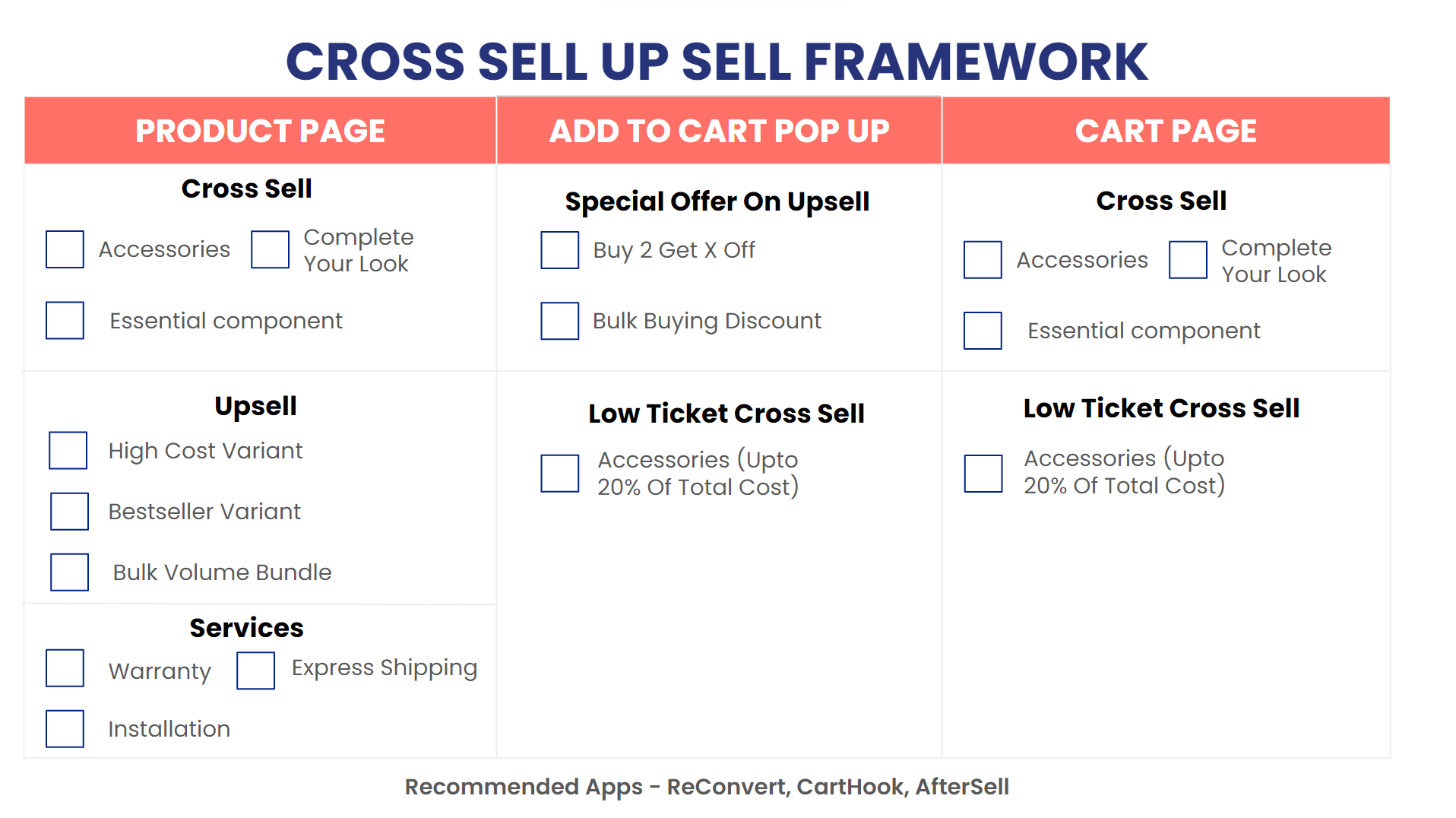
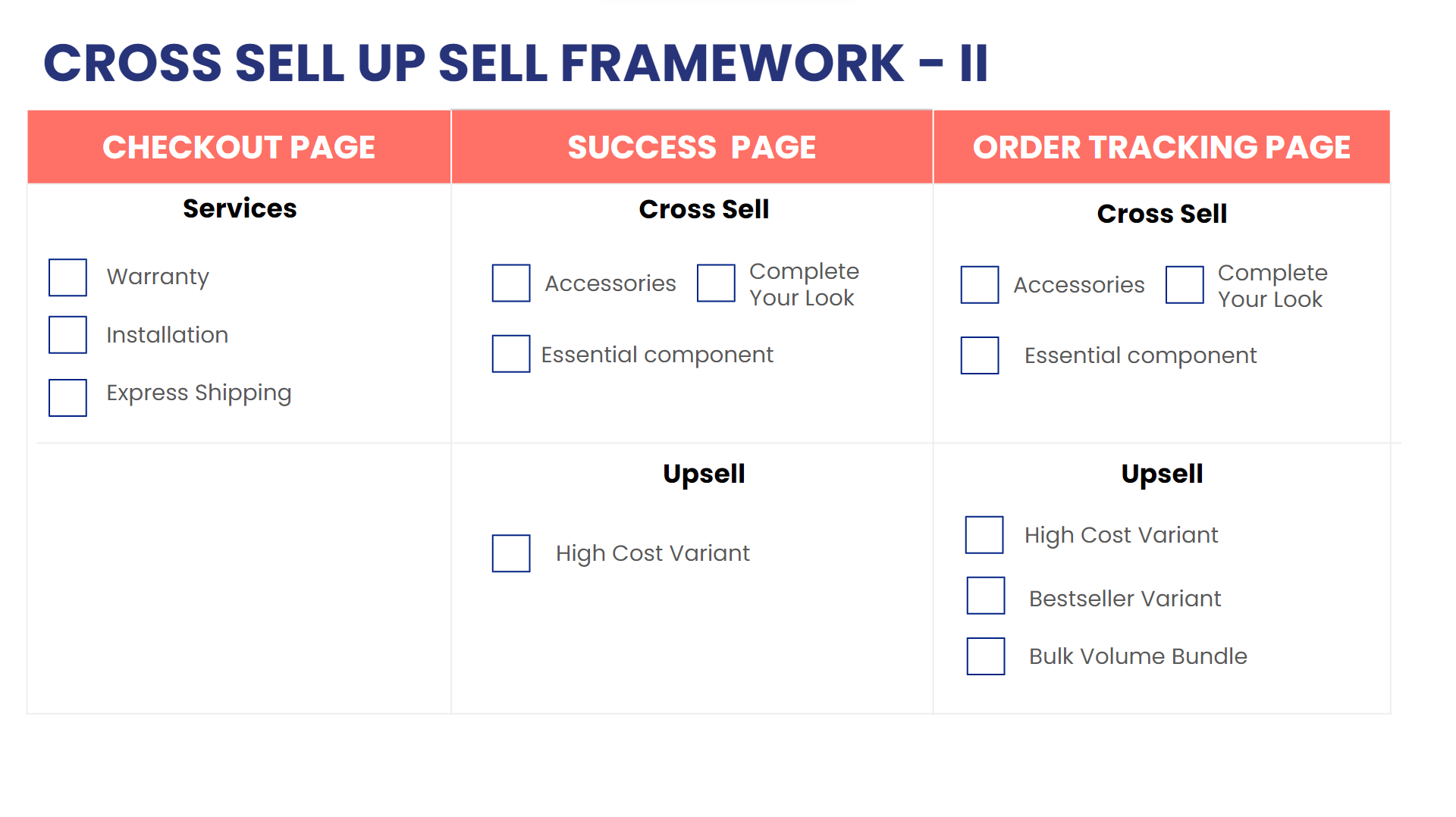
The Product Page
Optimizing the product page of an ecommerce brand is essentially important. Use smart techniques like cross-selling, upselling, and offering additional services to make the most of this space. Let’s look at how to boost your product page.
Cross-Sell
You can enhance your customer’s experience by adopting the following cross-selling approach:
1. Accessories– Imagine you’re eyeing that sleek camera on an ecommerce site. Right below, you spot a section suggesting camera bags, lenses, and tripods – that’s cross-selling. By recommending related accessories, the seller helps you build a complete package. It’s like suggesting the perfect shoes for that new dress!
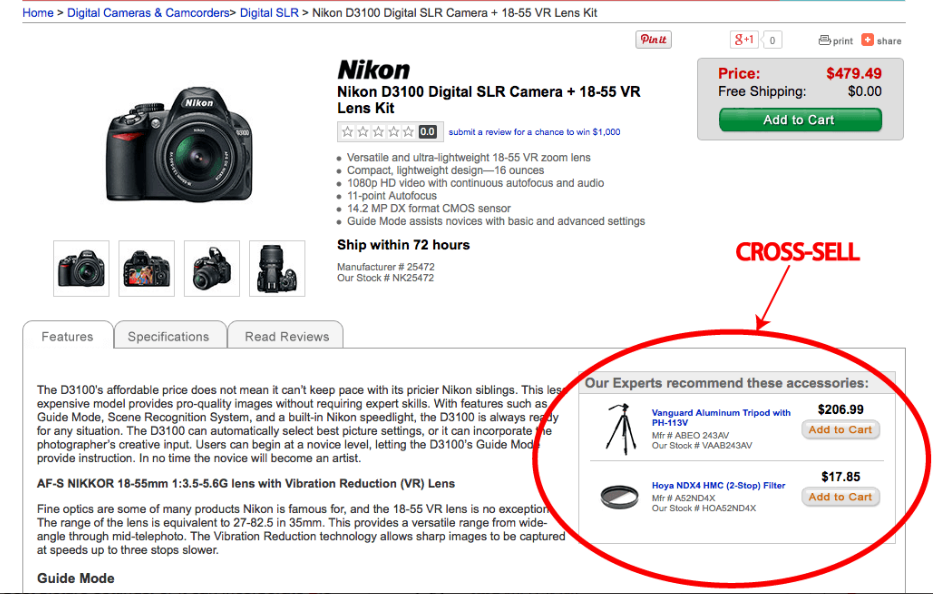
2. Complete Your Look– For fashionistas, the ‘Complete Your Look’ section is a game-changer. If you’re checking out a chic dress, the page might suggest matching shoes, a handbag, and some dazzling accessories. It’s the online version of a personal stylist, making sure you’re runway-ready.
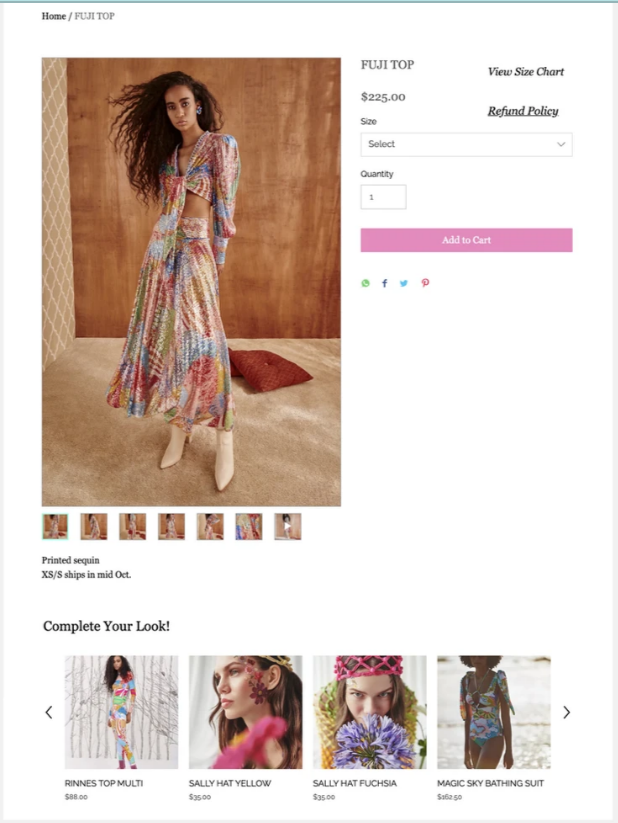
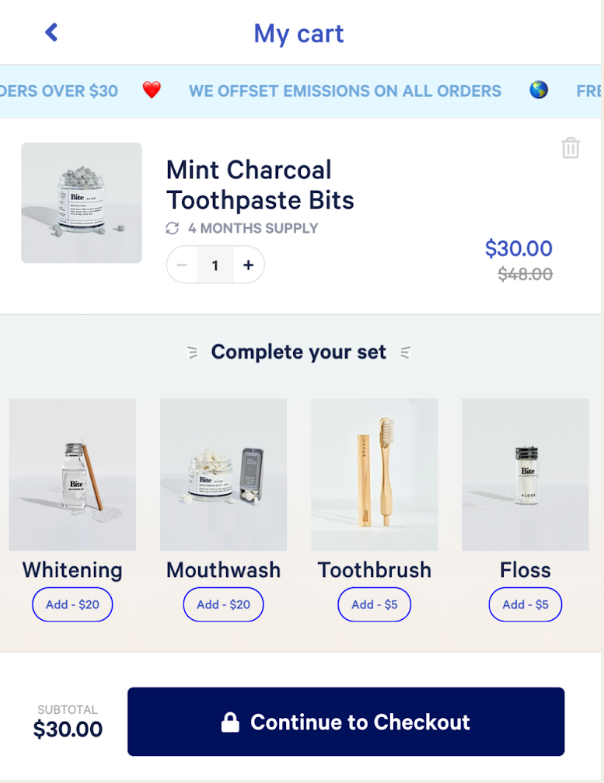
3. Essential Components- Tech gadgets often come with a need for extra cables, adapters, or protective cases. The ‘Essential Components’ cross-sell is about foreseeing the customer’s needs. If someone is buying a smartphone, why not recommend a durable phone case, a screen protector, or a power bank?

Upsell
Tempt your potential customers with fascinating and tempting upgrades:
1. High-Cost Variant– Upselling is all about offering a premium upgrade. Think of it like upgrading your regular coffee to a fancy cappuccino. On a product page for a smartphone, an upsell could be a version with more storage or enhanced features. Tempting, isn’t it?
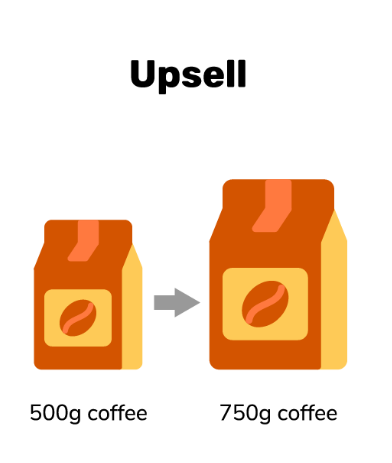
2. Bestseller Variant– Sometimes, the best choice is what everyone else is loving. An ecommerce page might suggest the ‘Bestseller Variant’ – the product that’s flying off the digital shelves. It’s like getting a restaurant recommendation from a friend who knows the menu inside out.

3. Bulk Volume Bundles– For items that often come in multiples – like printer ink, toiletries, or office supplies – offering ‘Bulk Volume Bundles‘ is a smart move. It’s not just about selling more; it’s about providing convenience and savings. Who wouldn’t want a year’s supply of toothpaste at a discounted price?
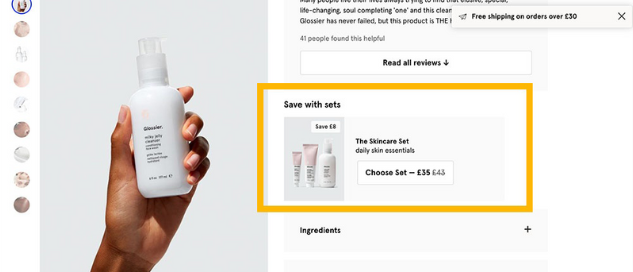
Services: Going the Extra Mile
Persuade your customer to go the extra mile and include the following services for better experience:
1. Warranty– Assurance matters. Including a ‘Warranty’ option on the product page communicates reliability. It’s like a safety net – if anything goes wrong, you’re covered. Sellers often present this as an extra layer of protection, ensuring customers feel secure in their purchase.
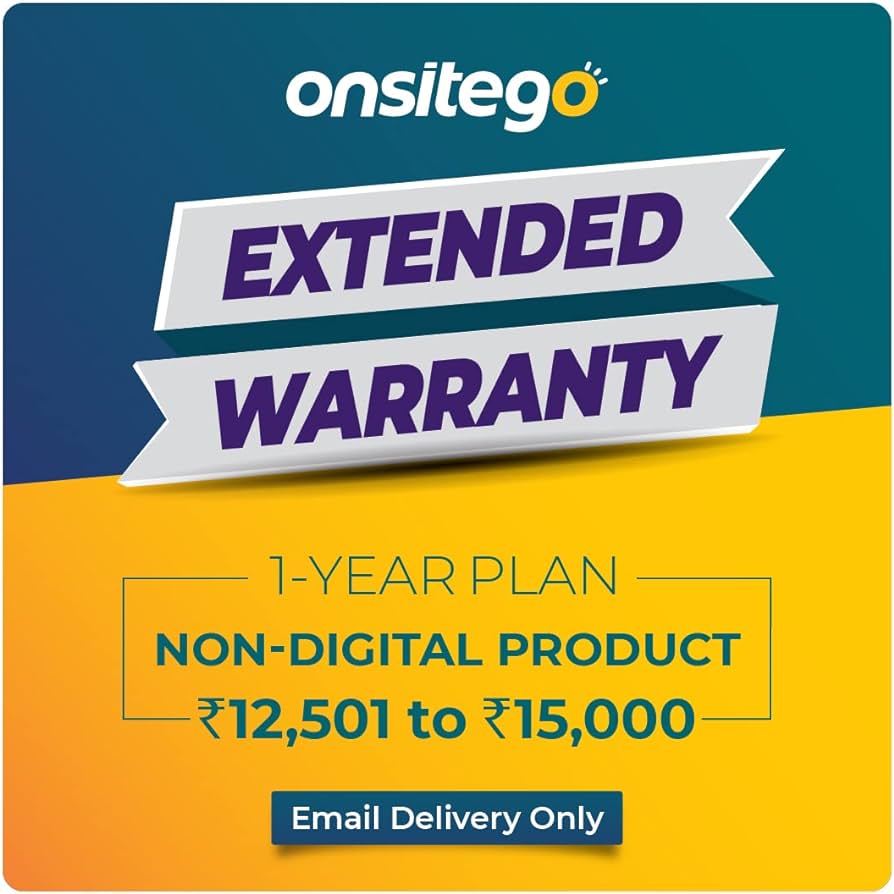
2. Express Shipping– In our fast-paced world, time is precious. ‘Express Shipping’ is the superhero of ecommerce services. Offering faster delivery can be a game-changer, especially for last-minute shoppers or those with urgent needs. It’s conveniently packaged with a bow.
3. Installation– Some products require a bit of technical know-how. Offering ‘Installation’ services on the product page is like having a handy friend on standby. It’s a gesture saying, “We’ll not only provide the product but also ensure it’s set up and ready to use”.
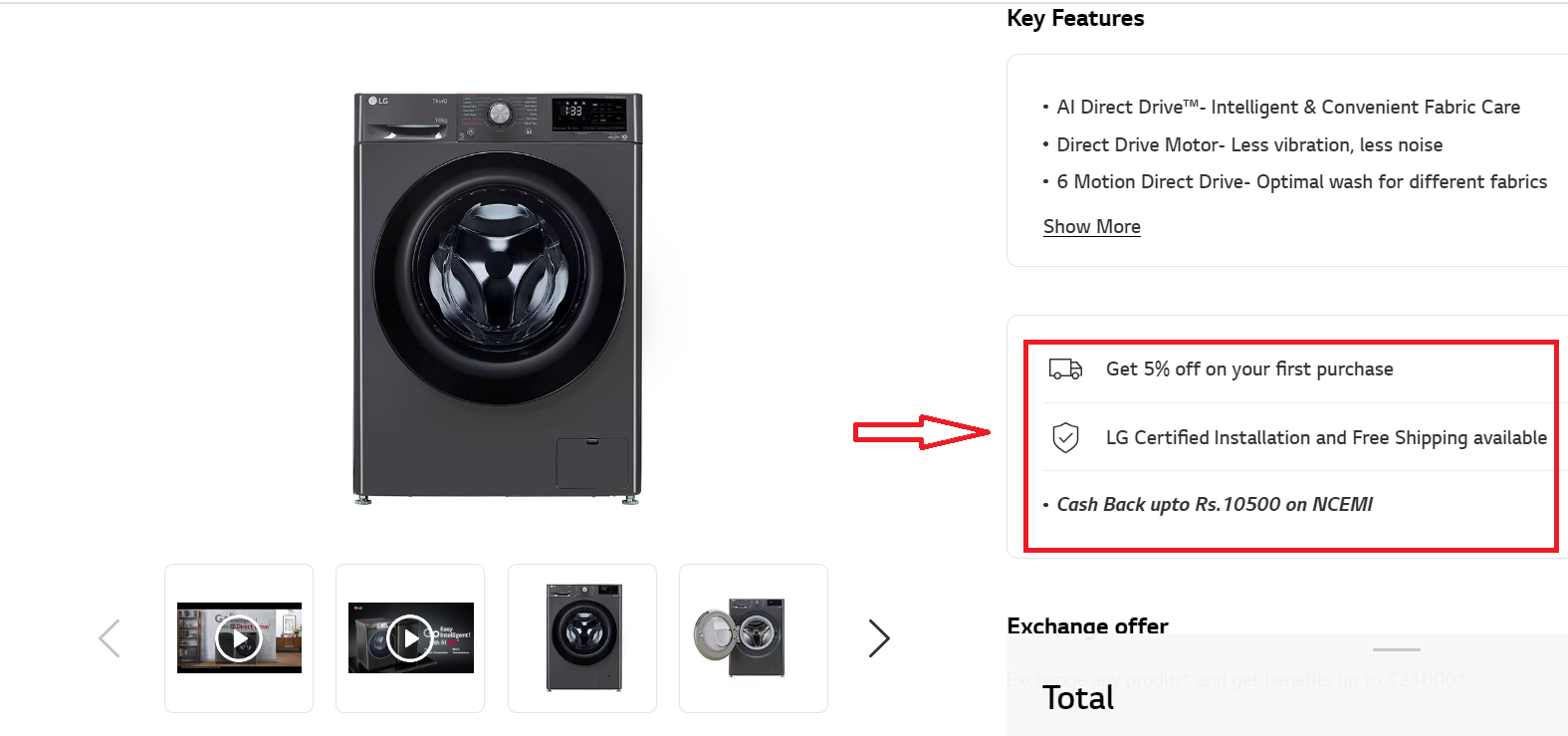
Remember, an ecommerce product page isn’t just about displaying a single item. It’s a canvas for a holistic shopping experience. Cross-selling, upselling, and offering services transform a simple transaction into a journey where customers feel understood, valued, and catered to. It’s not just about selling products; it’s about creating an online shopping adventure
Add To Cart Pop-Up
Giving an Add to Cart pop-up is a golden opportunity! It not only secures the initial purchase but also entices customers with irresistible cross-selling and upselling offers. Here’s a detailed look at how to make the most of this crucial moment in the buyer’s journey.
1. Give Special Offer On Upsell
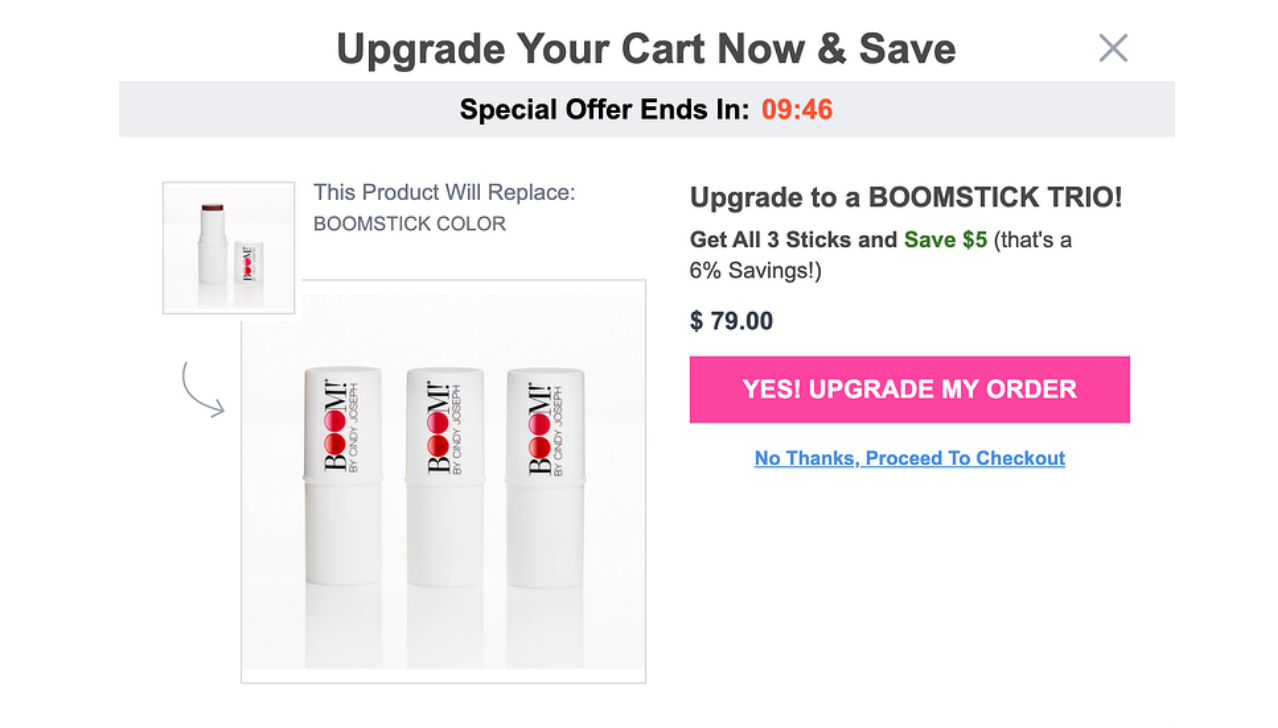
a. Buy 2, Get X% Off– Suppose a customer is about to purchase a pair of sneakers. In the “Add to Cart” pop-up, a tempting offer pops up – “Buy 2, Get 15% Off!” This incentivizes the shopper to consider grabbing an additional pair, perhaps in a different color or style. It’s a win-win – the customer gets a discount, and the seller increases the order value.
b. Bulk Buying– For products that lend themselves to bulk purchases. For example household items, skincare products, or office supplies, offering a ‘Bulk Buying’ discount can be a game-changer. The pop-up might suggest, “Upgrade to a pack of 5 and save 10%.” It’s a savvy move to encourage customers to stock up, simultaneously boosting sales and customer satisfaction.
2. Low Ticket Cross-sell
a. Accessories– Imagine someone is adding a sleek smartphone to their cart. The pop-up appears, suggesting stylish cases, screen protectors, or a pair of high-quality earphones. The offer is framed as an enhancement – “Complete your purchase with our recommended accessories and enjoy an extra 15% off!” This not only adds value to the customer but also contributes significantly to the overall order value.
The key here is to keep the cross-sell items reasonably priced in comparison to the main product. By capping the additional cost at a percentage (up to 20% of the total cost), you’re making the offer more appealing and ensuring that customers perceive it as a value-added proposition rather than an excessive expense.
Remember “Add to Cart” pop-up is a strategic movement in the online shopping experience. It’s where a customer’s decision to proceed with the purchase can be influenced, not only by the appeal of the main product but also by the allure of additional items and discounts.
By carefully crafting these offers, ecommerce businesses can create a sense of excitement and value, encouraging customers to explore more, buy more, and ultimately, become loyal patrons.
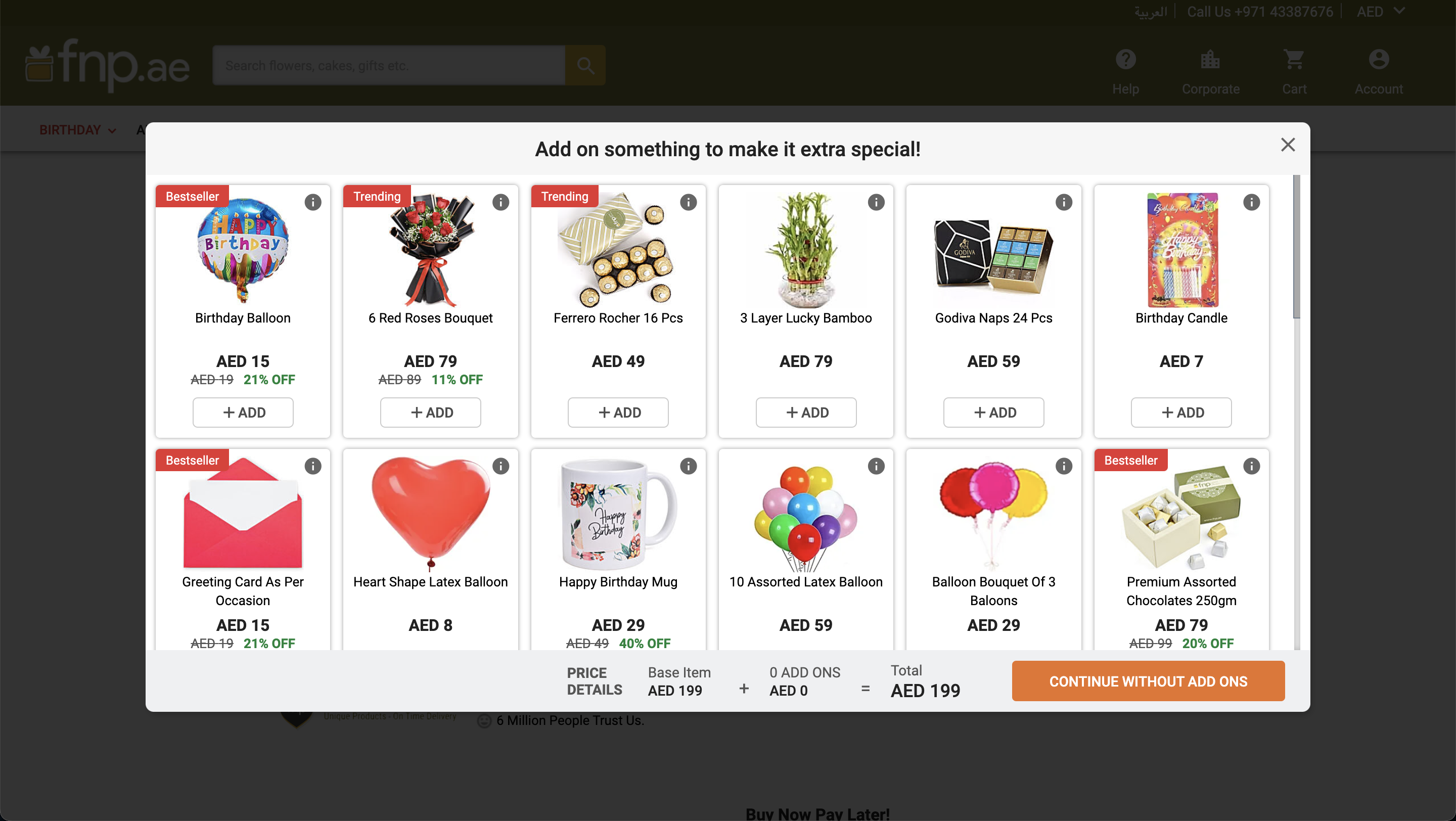
The Cart Page
The cart page is a critical juncture where customers are making their final decisions before completing a purchase. Maximizing this opportunity for cross-selling accessories and low-ticket items involves a thoughtful strategy to enhance the shopping experience.
1. Cross-Sell
a. Accessories– As customers review the items in their cart, the addition of a carefully curated ‘Accessories’ section can work wonders. Suppose a shopper has a shaving blade in his cart; the cart page could suggest shaving cream, aftershave lotion, or a shaving blade. This is about enhancing the utility of the main product by offering supplementary items. The key is relevance, the suggested accessories should complement and enhance the primary purchase.
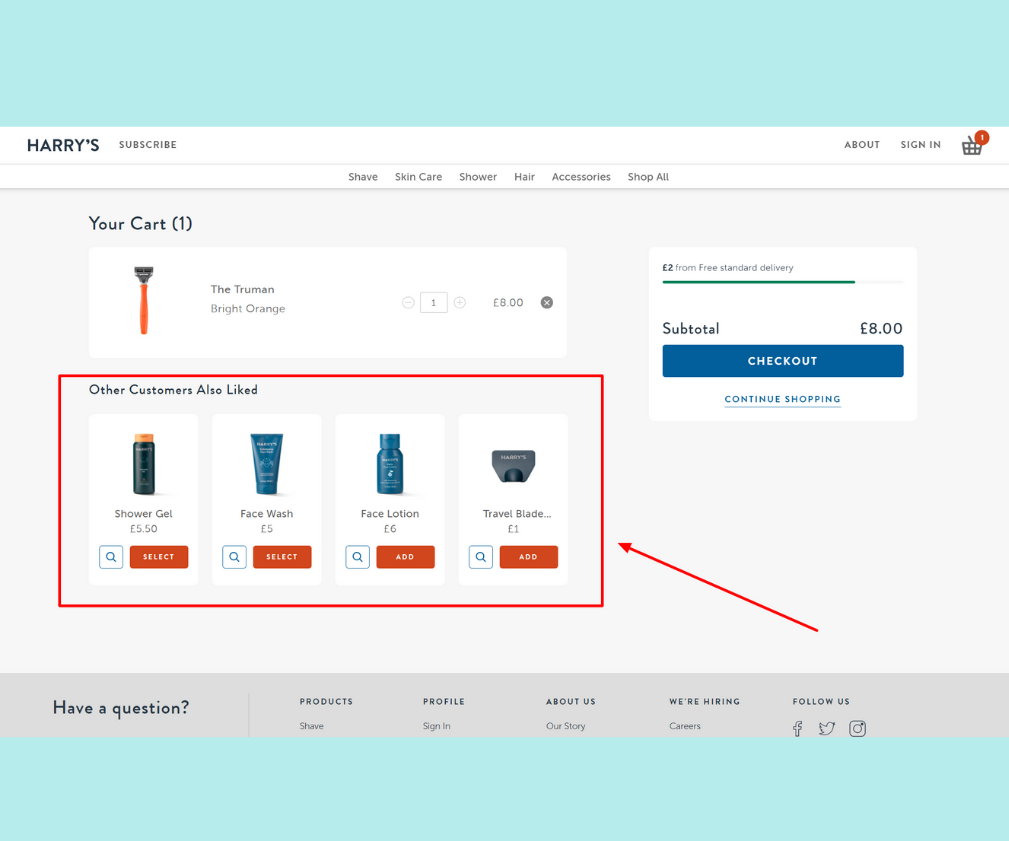
b. Complete Your Look– For fashion items, the ‘Complete Your Look’ cross-sell is a gem. If a customer has a dress in their cart, the page could recommend matching shoes, a handbag, and accessories. This not only helps the shopper visualize a complete outfit but also encourages them to consider a more extensive purchase. It’s akin to having a virtual personal stylist, guiding customers to a coordinated ensemble.
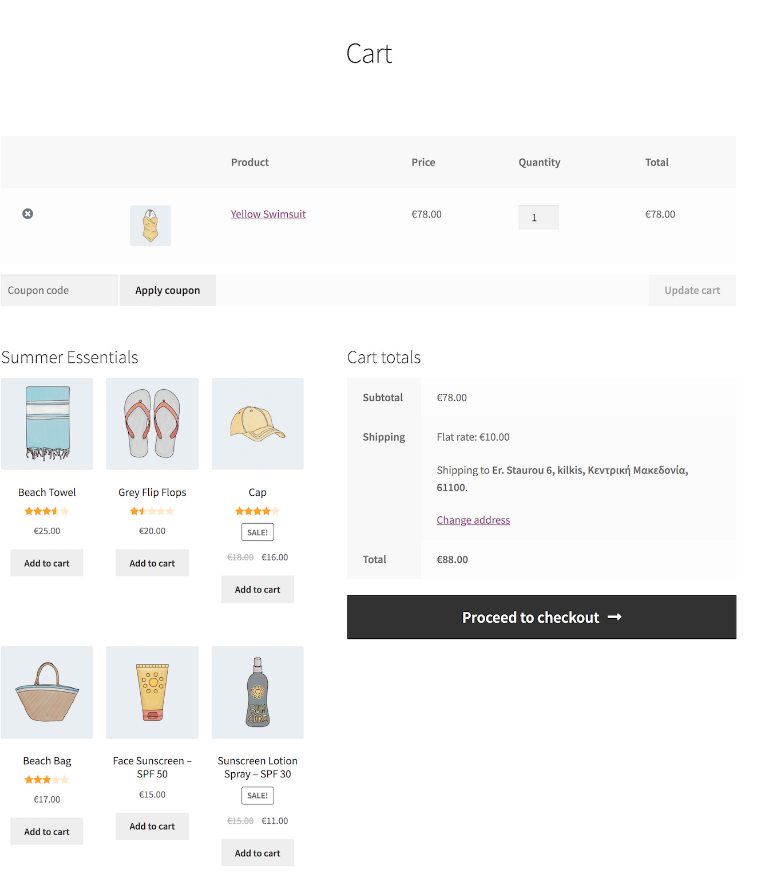
c. Essential Components– Certain products require additional components for optimal functionality. For instance, if a customer has a laptop in their cart, suggesting essential components like a laptop bag, a mouse, or extra charging cables is a strategic move. This ensures that customers have everything they need for a seamless user experience, thus adding value to their purchase.
2. Low Ticket Cross-Sell
a. Accessories– When cross-selling low-ticket items, such as accessories, it’s crucial to strike a balance. The suggested accessories should complement the main product without significantly increasing the overall cost.
For instance, if a customer is purchasing an shorts, offering stylish accessories like hat at an additional cost of up to 20% can be enticing.
This percentage cap ensures that the cross-sell remains reasonable and doesn’t deter customers with a significant price jump. The goal is to present these low-ticket items as valuable additions that enhance the main purchase without breaking the bank.
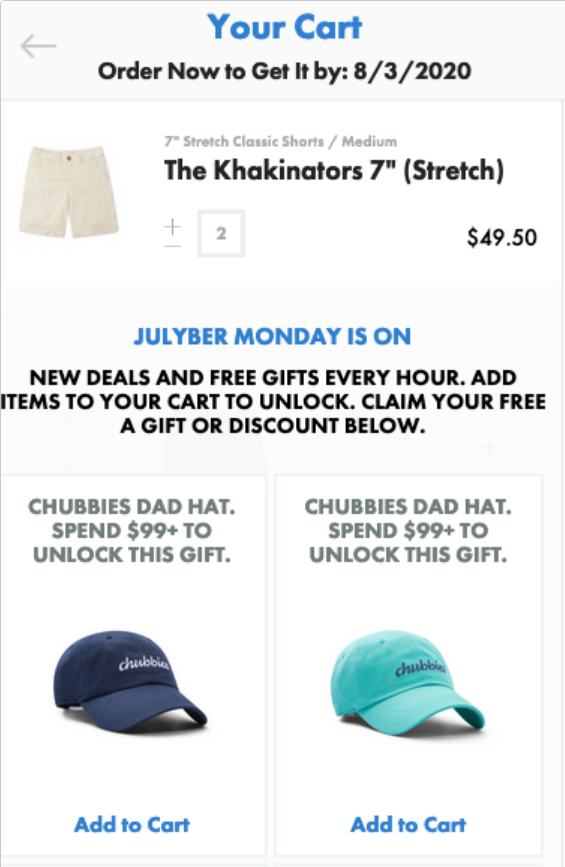
Remember, the cart page in ecommerce is a dynamic space where strategic cross-selling can significantly impact the final purchase decision. By suggesting relevant accessories and low-ticket items, businesses can not only boost sales but also enhance customer satisfaction by providing a comprehensive shopping experience. The key lies in understanding the customer’s needs and seamlessly integrating these suggestions into the cart page interface.
The Checkout Page
The checkout page is the final frontier in the customer’s journey, and strategically offering services at this stage can enhance the overall shopping experience. However, it’s generally not recommended to cross-sell or upsell additional items at this point to avoid distraction and potential cart abandonment.
Selling Services on the Checkout Page
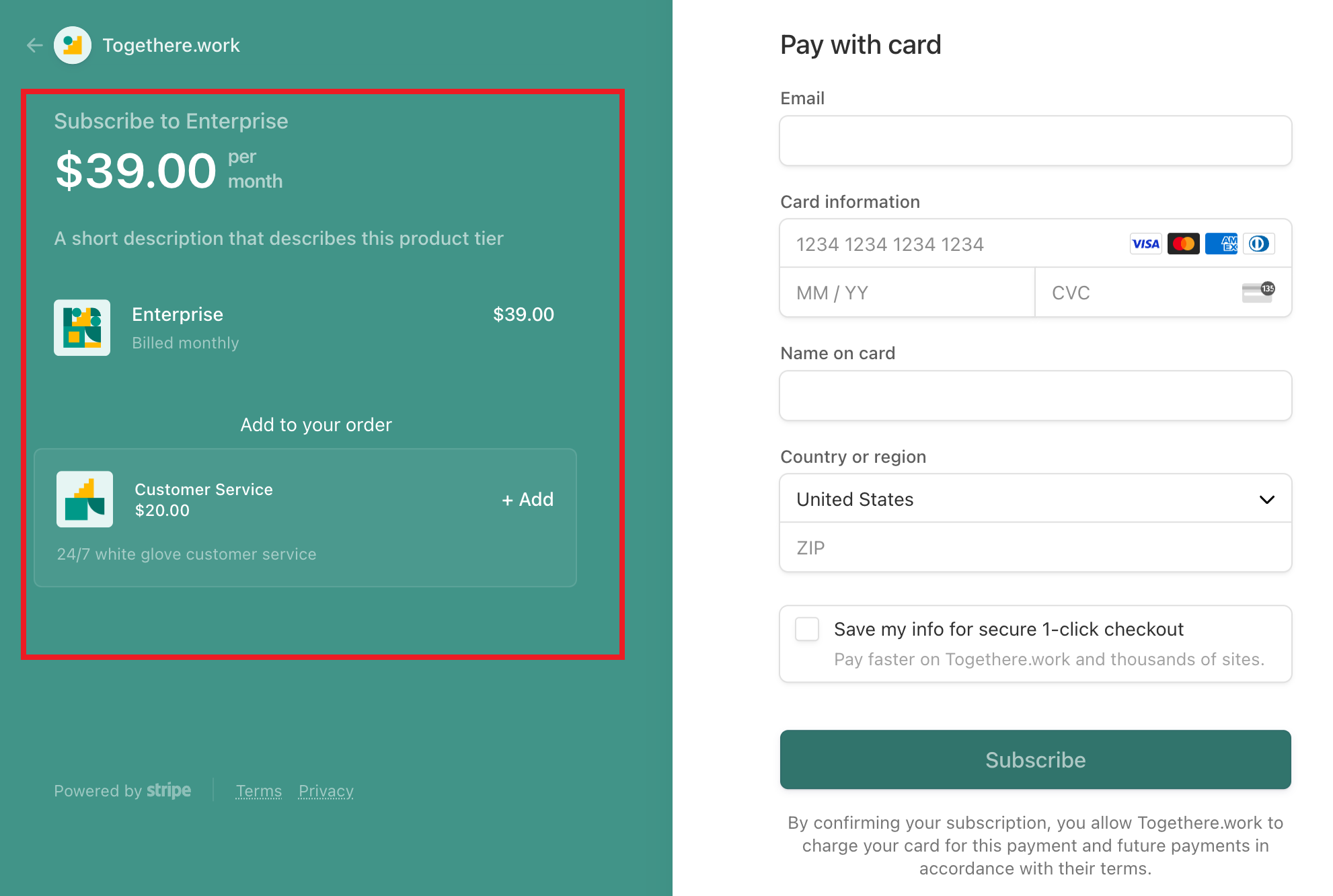
Similarly we can promote other services like:
1. Warranty– Introducing a warranty option on the checkout page is a valuable service that instills confidence in the customer. A checkbox or an easily accessible button could offer an extended warranty for the purchased product. The language used should emphasize the added peace of mind and assurance. For instance, “Secure your purchase with an extended warranty for an additional year.”
2. Express Shipping– For those customers who need their products in a hurry, offering express shipping services on the checkout page is a smart move. This service could be presented with a clear message like, “Upgrade to Express Shipping for faster delivery!” The key is to highlight the convenience and speed, making it an attractive option for customers with urgent needs.
3. Installation– For products that require installation or setup, providing professional installation services on the checkout page can be a game-changer. Whether it’s a tech gadget, furniture, or home appliance, offering an installation service ensures that the customer can enjoy their purchase hassle-free. The message could be something like, “Opt for our expert installation service for a seamless experience with your new product.”
Why Not to Cross-Sell or Upsell Additional Items?
While cross-selling and upselling are powerful strategies, the checkout page might not be the ideal space for them. Here’s why:
1. Distraction Risk– At the checkout stage, customers are focused on finalizing their purchase. Introducing additional items for cross-selling or upselling might distract them, leading to confusion and potential abandonment of the purchase. Streamlining the process at this point helps maintain a smooth and efficient transaction.
2. Risk of Cart Abandonment– Customers reaching the checkout page have already made their primary purchasing decisions. Introducing new items may create uncertainty, and if the customer feels overwhelmed or unsure, they might abandon their cart altogether. It’s crucial to minimize friction during the final steps of the transaction.
3. User Experience Considerations– The checkout page is all about providing a seamless and straightforward user experience. Introducing cross-selling or upselling items at this point may disrupt the flow and frustrate customers. It’s essential to keep the focus on completing the purchase smoothly.
Remember, at the checkout page offer valuable services that enhance the customer’s experience without introducing potential distractions. By strategically presenting warranty options, express shipping, and installation services, businesses can add significant value and convenience, ensuring a positive and efficient end to the customer’s online shopping journey.
The Order Success Page
The order success page is a prime opportunity to further engage with customers and maximize the value of their purchase through strategic cross-selling and upselling. Here’s how you can implement these techniques effectively:
Cross-Sell
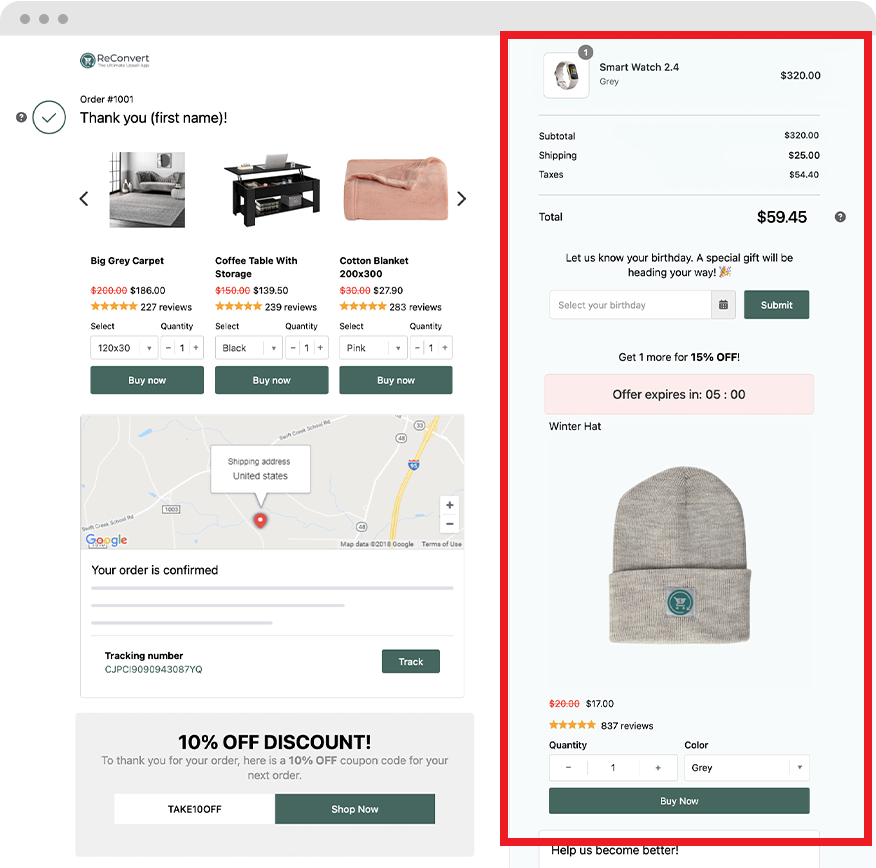
- Accessories- On the order success page, present customers with a curated selection of accessories related to their purchase. For example, if someone has just bought a smartphone, showcase compatible cases, screen protectors, and stylish chargers. Use persuasive language such as, “Enhance your new device with our range of accessories!” This cross-sell technique capitalizes on the customer’s current mindset and willingness to explore additional items that complement their main purchase.
- Complete Your Look– For fashion or home decor items, the ‘Complete Your Look’ cross-sell strategy works wonders. If a customer has bought a dress, suggest matching accessories, shoes, or even home decor items that coordinate well. This not only provides a holistic shopping experience but also encourages customers to envision a complete ensemble or setting. The message could be something like, “Elevate your style with our curated collection of matching accessories.”
- Essential Components– Certain products may require essential components for optimal performance. For instance, if a customer has purchased a laptop, suggest additional accessories like a laptop stand, a mouse, or a laptop bag. Phrase it as a way to enhance their overall experience: “Complete your setup with these essential components.” This not only adds value to the purchase but also ensures that the customer has everything they need for seamless usage.
Upsell
- High-Cost Variant– Upselling on the order success page involves presenting customers with a premium or high-cost variant of the product they just purchased. For instance, if a customer bought a basic model of a laptop, showcase a more advanced version with upgraded features, higher storage capacity, or enhanced performance.
The key is to highlight the additional benefits they would gain by choosing the higher-cost option. A persuasive message could be, “Upgrade to our premium model for an even more powerful computing experience!”
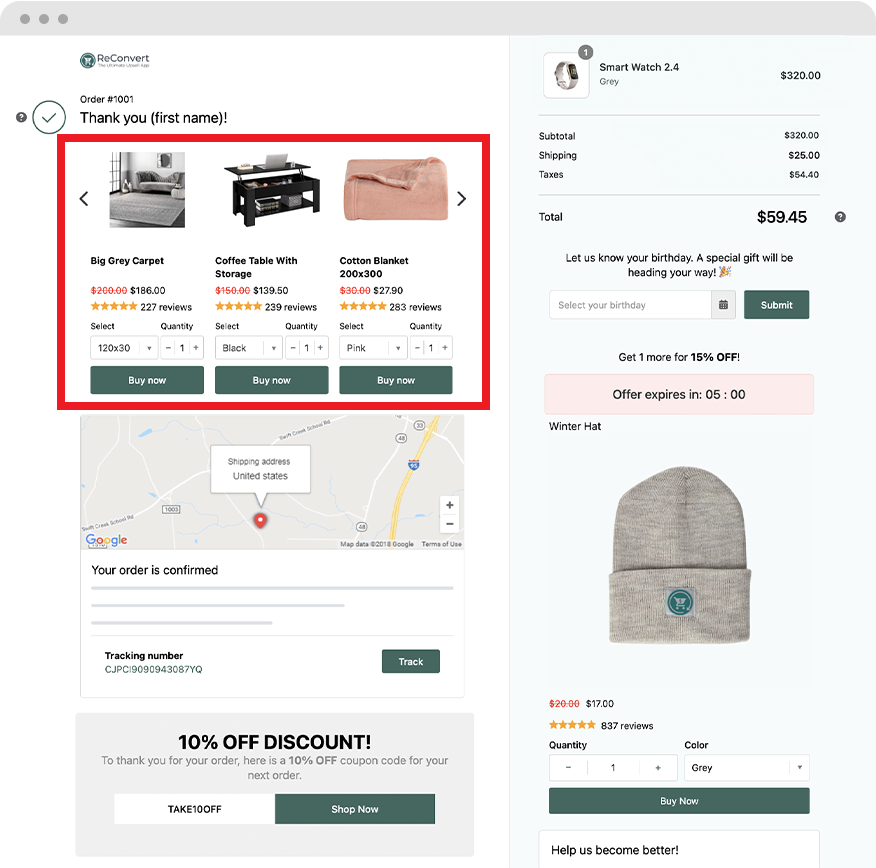
Best Practices For Implementation:
- Strategic Placement– Ensure that the cross-sell and upsell suggestions are prominently displayed on the order success page without overshadowing the confirmation details. A visually appealing layout can catch the customer’s attention without being intrusive.
- Clear and Concise Messaging– Use clear and persuasive language to communicate the benefits of the suggested items. Highlight how these additional items can complement or enhance the customer’s original purchase.
- One-Click Add to Cart– Simplify the process for customers by incorporating one-click add-to-cart buttons for the suggested items. This reduces friction and encourages spontaneous purchases.
Remember, the order success page is a valuable touchpoint where customers are in a positive and receptive mindset. By carefully implementing cross-sell and upsell strategies, ecommerce businesses can capitalize on this moment to boost sales, provide additional value to customers, and enhance the overall shopping experience.
The Order Tracking Page
The order tracking page is where customers eagerly monitor the progress of their purchases. Here you have an opportunity to strategically implement cross-selling and upselling techniques. By presenting relevant offers, ecommerce businesses can enhance the customer experience and potentially increase the order value.
Cross-Sell
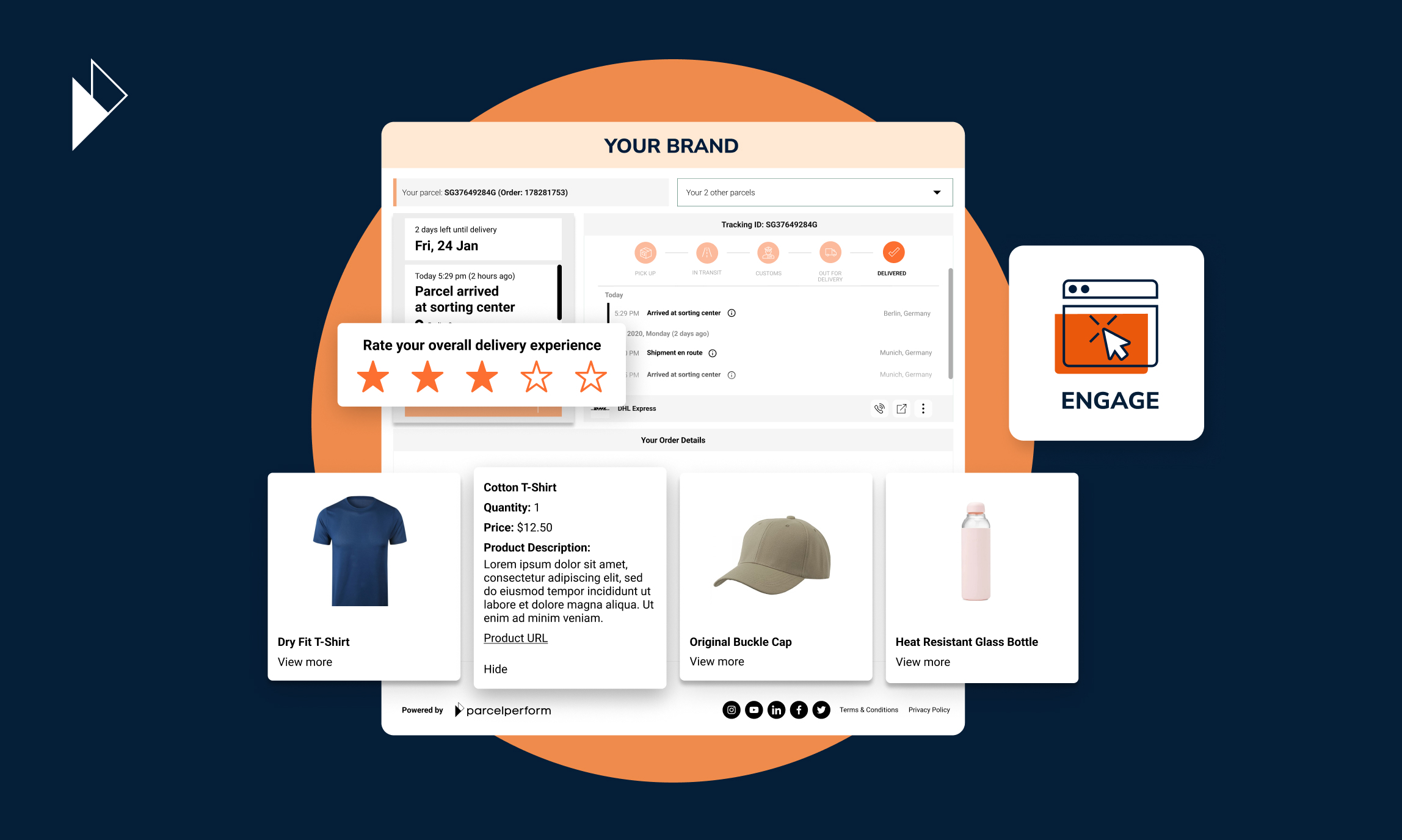
- Accessories– As customers track their order, present them with a thoughtfully curated selection of accessories that complement their purchase. For instance, if a customer has ordered a new smartphone, suggest compatible cases, screen protectors, or stylish charging cables. The key is to enhance the utility or aesthetics of their main purchase, making the cross-sell items both relevant and tempting.
- Complete Your Look– For fashion items or home decor, leverage the ‘Complete Your Look’ cross-sell strategy. If a customer has ordered a dress, propose matching accessories, shoes, or home decor items that complete the ensemble. This technique not only encourages customers to envision a cohesive look but also adds a touch of personalization to their shopping journey.
- Essential Components– Some products require additional components for optimal performance. If a customer has ordered a laptop, for instance, suggest essential accessories like a laptop stand, a wireless mouse, or a durable laptop bag. Position these items as enhancing the overall experience and functionality of their primary purchase.
Upsell
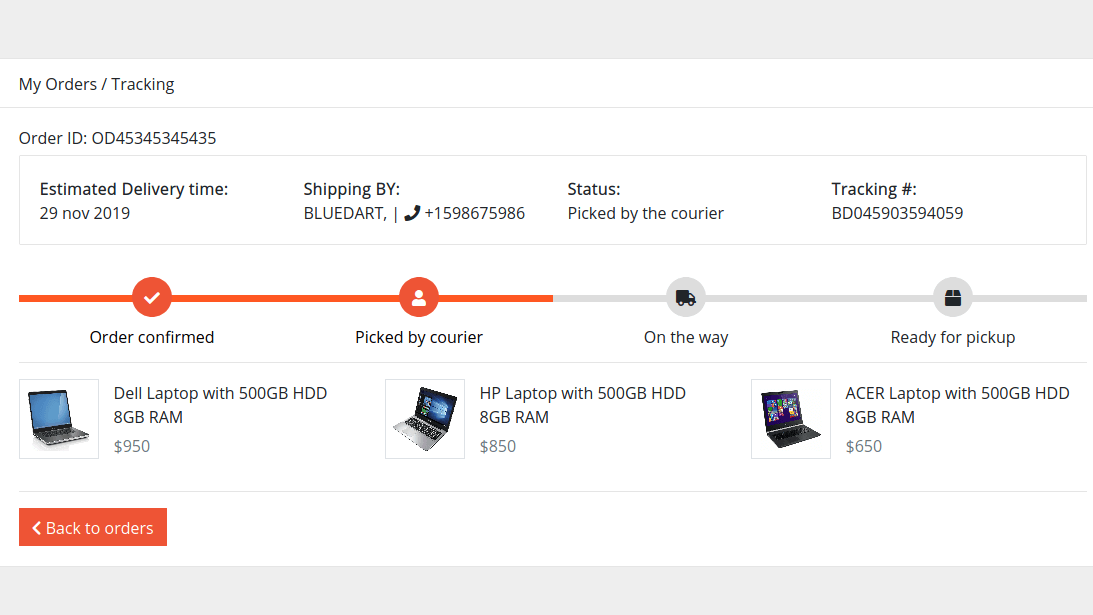
- High-Cost Variant– Showcase a high-cost variant of the product the customer has already ordered. If they’ve purchased a basic model of a gadget, present them with a premium version boasting advanced features, higher specifications, or enhanced performance. Use persuasive language to highlight the added benefits and elevate their overall user experience.
- Bestseller Variant– Introduce the customer to a bestseller variant of the product they’ve ordered. This suggests that there’s a more popular or upgraded version available that other customers have found appealing. Frame it as an opportunity to enjoy the enhanced features and benefits that make it a favorite among others.
- Bulk Volume Bundle– For products that are often bought in multiples, such as office supplies or toiletries, present the option of a bulk volume bundle on the order tracking page. Offer a discounted rate for purchasing in larger quantities, making it a cost-effective and convenient choice for customers who may need more of the same item.
Best Practices for Implementation
- Visually Appealing Presentation– Use visually appealing graphics or banners to showcase the cross-sell and upsell offers without overwhelming the customer. Clear and attractive visuals enhance the chances of capturing attention.
- Non-Intrusive Placement– Ensure that the cross-sell and upsell suggestions do not obstruct or distract from the primary purpose of the order tracking page – providing updates on the customer’s purchase. Place these suggestions in a non-intrusive manner, allowing customers to engage with them at their discretion.
- Personalized Recommendations– Leverage customer data and purchase history to personalize the cross-sell and upsell recommendations. Tailor the suggestions to align with the customer’s preferences and past purchases, increasing the likelihood of a successful add-on.
Remember, the order tracking page in ecommerce presents a valuable opportunity to enhance customer satisfaction and increase revenue through strategic cross-selling and upselling.
By presenting relevant and enticing offers in a visually appealing and non-intrusive manner, ecommerce businesses can capitalize on this moment of customer engagement and make the post-purchase experience even more rewarding.
Conclusion
Incorporating a comprehensive cross-sell and upsell framework across all stages of the customer journey. Right from the product page to the order tracking page, creates a seamless and personalized shopping experience.
By strategically suggesting accessories, complementary items, and upgraded variants, ecommerce brands not only enhance customer satisfaction but also unlock additional revenue streams. The effectiveness of this framework lies in providing value, convenience, and a sense of personalized care, fostering customer loyalty.
As customers consistently experience thoughtful suggestions throughout their journey, they’re more likely to become brand advocates, contributing to sustained growth and success for the ecommerce business.
